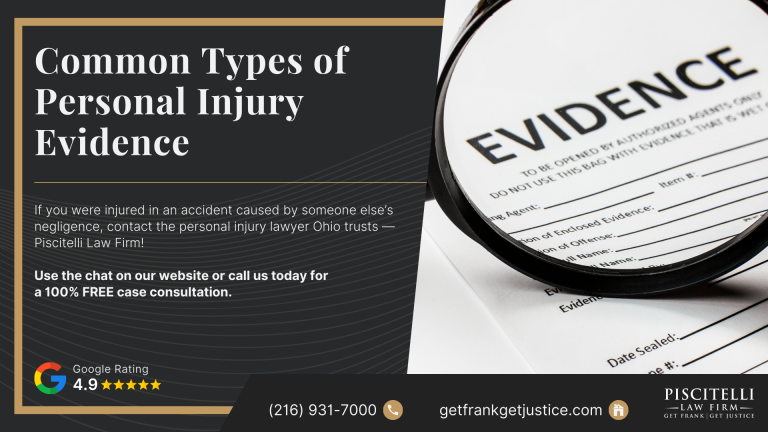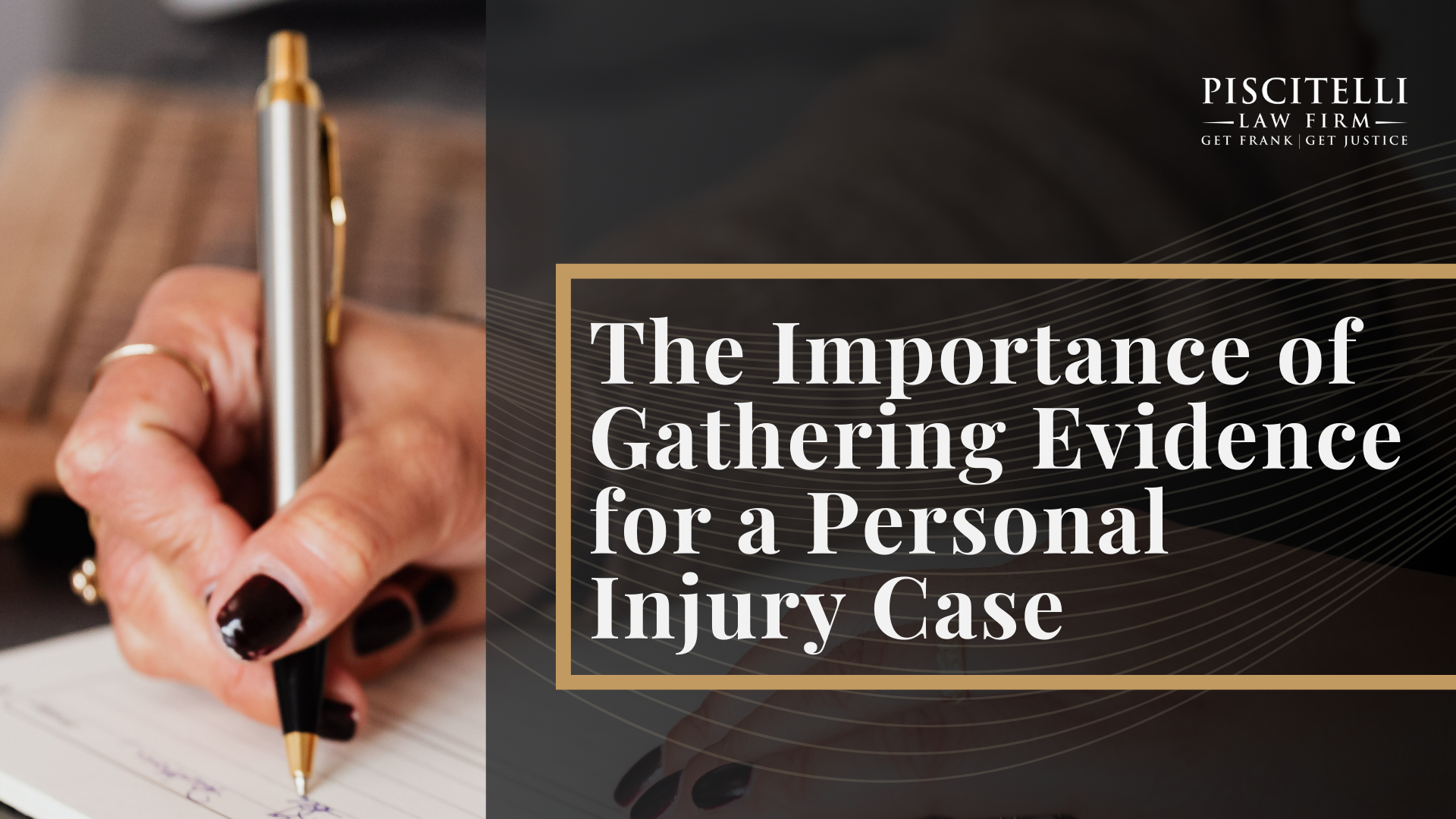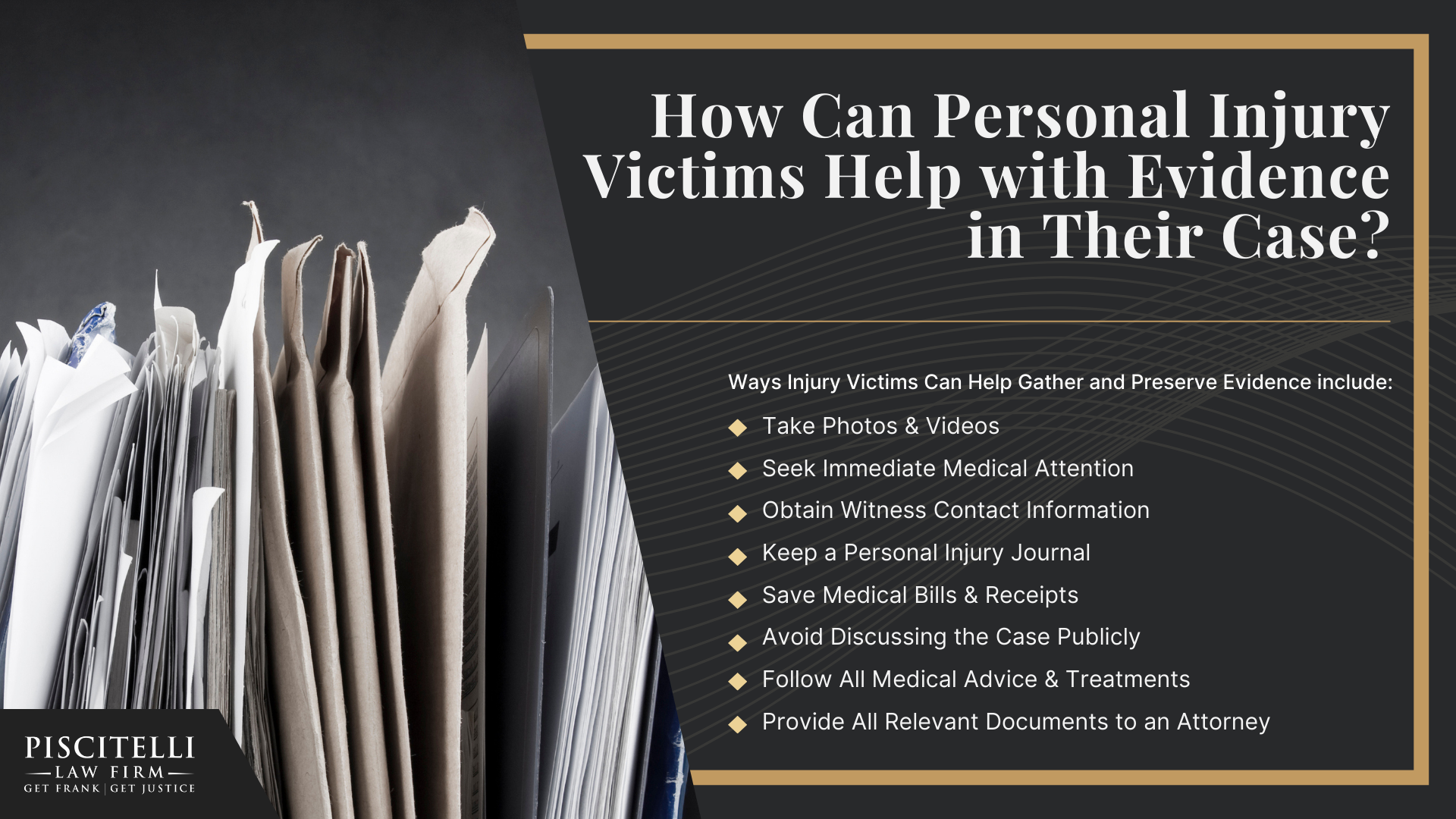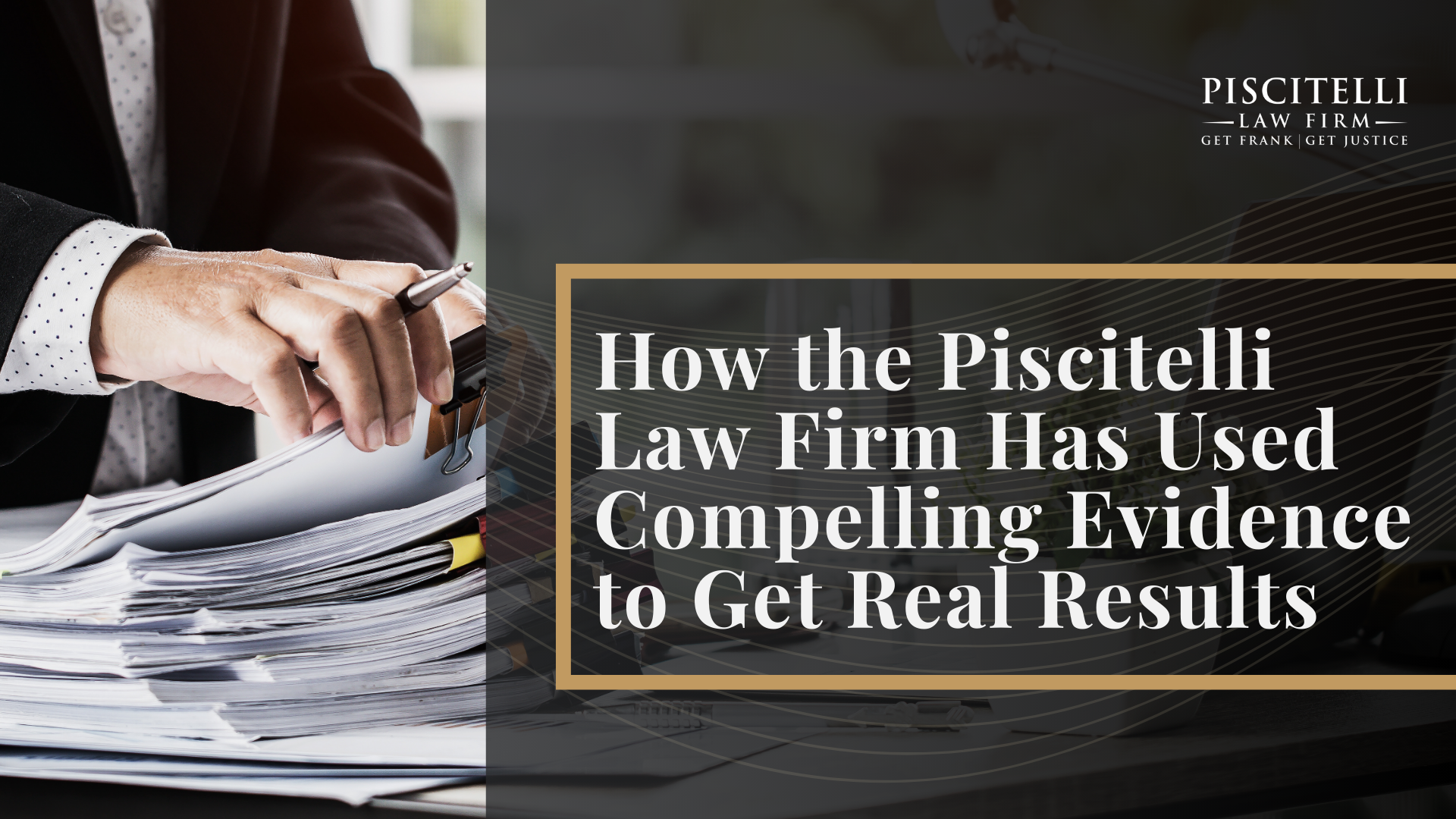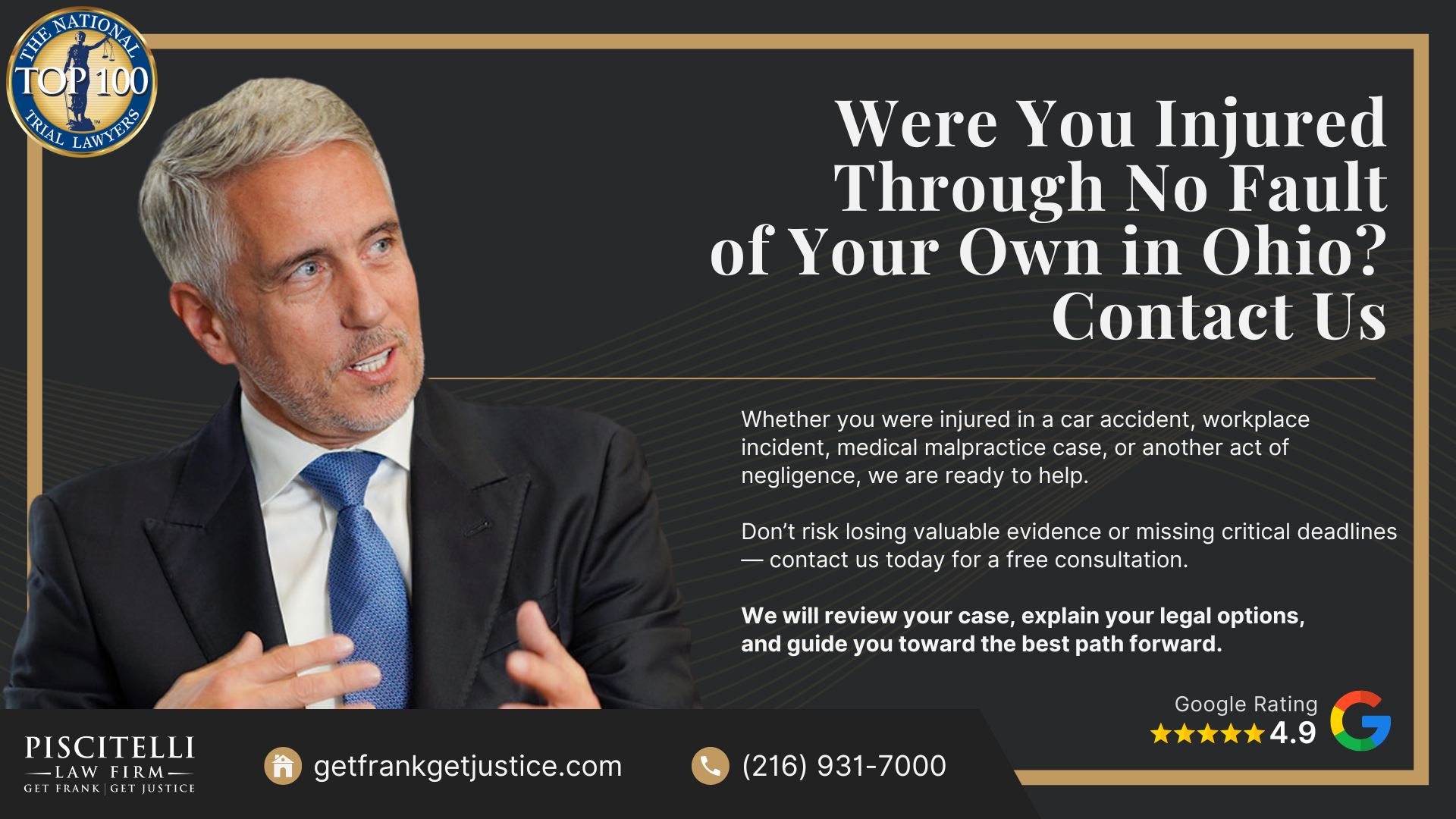Different types of personal injuries generate different forms of evidence, depending on how they occur and the parties involved.
A car accident, for example, often produces police reports, insurance company records, and video footage from traffic cameras or dashcams.
A slip and fall case may rely more on maintenance records, witness statements, and photographs of hazardous conditions.
Workplace injuries can involve OSHA reports, employment records, and safety inspections that document whether the defendant breached workplace safety regulations.
The proof required in a medical malpractice case often includes medical records, expert testimony, and treatment history to demonstrate deviations from the accepted standard of care.
The steps taken immediately after an accident influence the valuable evidence available, as early documentation can prevent key details from being lost.
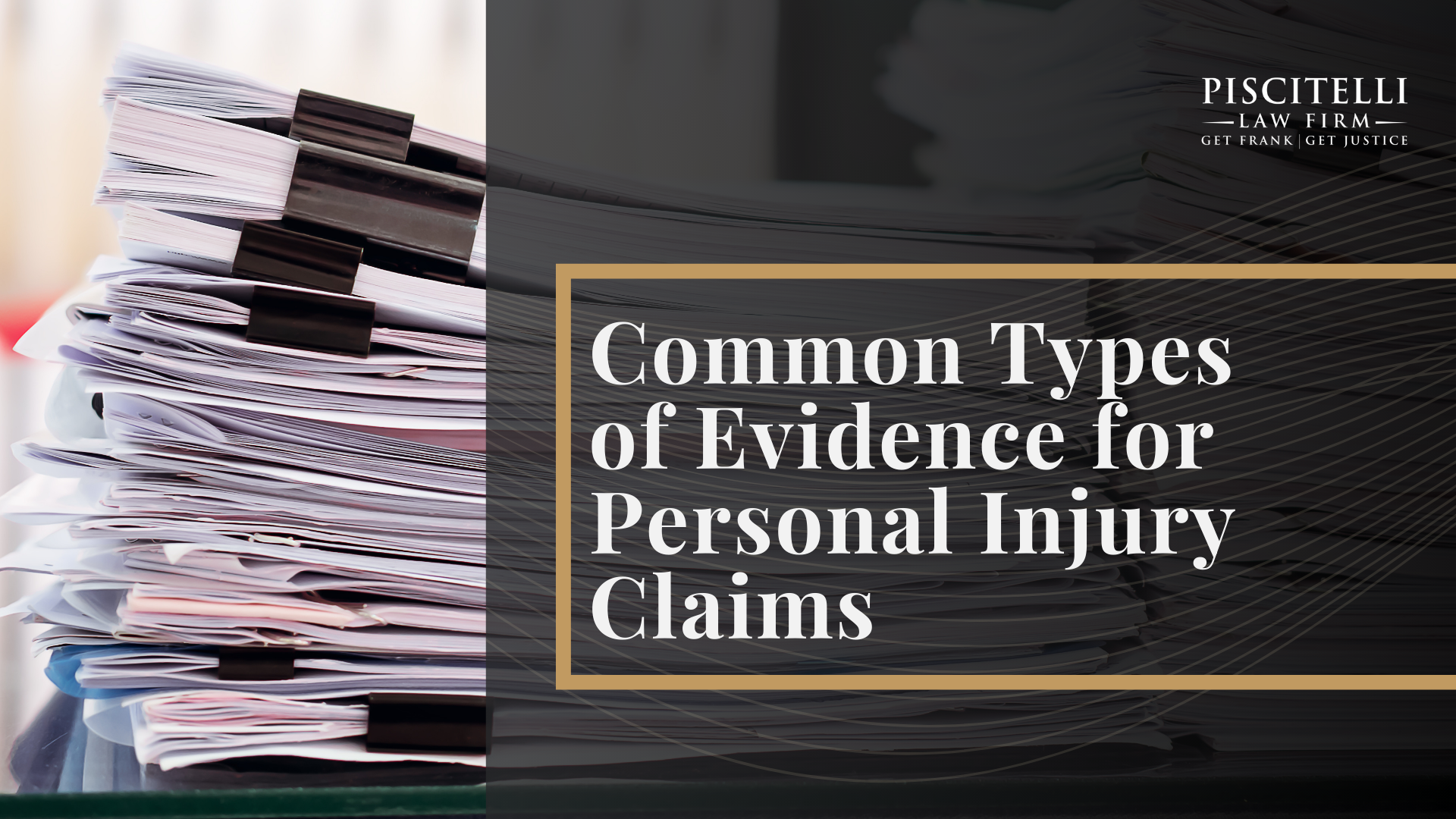
Eyewitness statements gathered at the accident scene can provide first-hand accounts of the events leading to the injury.
Surveillance and video footage from nearby businesses or traffic cameras can further support the claim by capturing the moment of impact.
Without compelling evidence, it becomes more difficult to prove that someone else’s negligence caused the injuries sustained, which can directly impact the ability to seek compensation.
General types of evidence in personal injury claims include:
- Official Documentation
- Physical Evidence
- Eyewitness and Testimonial Evidence
- Electronic and Surveillance Evidence
- Written Correspondence and Records
Official Documentation
Official records provide key details about an accident, the injuries sustained, and the financial losses involved.
These documents often come from law enforcement, medical professionals, employers, and insurance providers, offering compelling evidence that can support a claim.
The evidence presented in personal injury cases often includes police and incident reports, medical records, and financial statements that help establish liability and damages.
Documentary evidence may include:
- Police reports (for car accidents, assaults, or public incidents)
- Incident reports (for workplace injuries, slip and falls, or store accidents)
- OSHA or workplace safety reports
- Insurance company records (claims, adjuster reports, policy details)
- Medical records (doctor’s notes, hospital charts, imaging scans, prescriptions)
- Billing statements (medical bills, rehabilitation, lost wages)
- Employment records (for wage loss claims and disability cases)
Physical Evidence
Tangible evidence from an accident scene can be powerful in proving how an injury occurred and the extent of the injuries sustained.
Physical objects, damage to vehicles or property, and hazardous conditions captured in photos can provide compelling evidence that supports a claim.
The proof required varies by case, but physical evidence often helps establish that the defendant breached a duty of care, leading to harm.
Physical evidence may include:
- Photographs of the accident scene (skid marks, property damage, hazardous conditions)
- Damaged property (vehicles, personal belongings, safety equipment)
- Blood alcohol content (BAC) tests or drug screening results (for DUI-related injuries)
- Defective product samples (in product liability cases)
Eyewitness and Testimonial Evidence
Statements from witnesses and experts can provide valuable evidence that helps clarify the events leading to an injury.
Eyewitness statements from bystanders, passengers, or coworkers can describe what happened in real time, while expert testimony can analyze and explain technical details.
Testimonies from those involved, including depositions and sworn statements, can further strengthen a claim and demonstrate how someone else’s negligence caused harm.
Eyewitness testimony and related evidence include:
- Eyewitness statements (people who saw the incident occur)
- Expert testimony (expert opinions from accident reconstructionists, doctors, engineers)
- Depositions from involved parties
Electronic and Surveillance Evidence
Digital records and video footage can provide evidence that supports an injured party’s claim, often offering objective documentation of an incident.
In a car crash, surveillance cameras, dashcams, and black box data can capture what happened in real time, while cell phone records may indicate distracted driving.
These forms of evidence are frequently used in civil cases to demonstrate fault, verify claims, and support the injured party’s right to compensation.
Electronic and surveillance evidence may include:
- Traffic camera or dashcam footage
- Video footage from security cameras (businesses, intersections, parking lots)
- Cell phone records (text messages, call logs in distracted driving cases)
- Black box data (from commercial trucks and some personal vehicles)
Written Correspondence and Records
In personal injury law, written records and communication can provide evidence of liability, damages, and negligence.
Emails, text messages, and maintenance logs may show that a store owner or employer was aware of a hazard but failed to address it.
Relevant documents such as safety inspection reports or correspondence with an insurance company can provide insights into the responsible party’s actions before and after an incident.
These records play a crucial role in the legal system, helping establish facts in civil cases.
Written correspondence and records may include:
- Emails, texts, or messages related to the accident
- Maintenance logs (for property owners or commercial buildings)
- Safety inspection reports (especially in premises liability or workplace injury cases)


